Garmin Forerunner 265 review: AMOLED, at last
Finally, a bright, AMOLED Garmin watch that offers all the training and recovery features under the sun
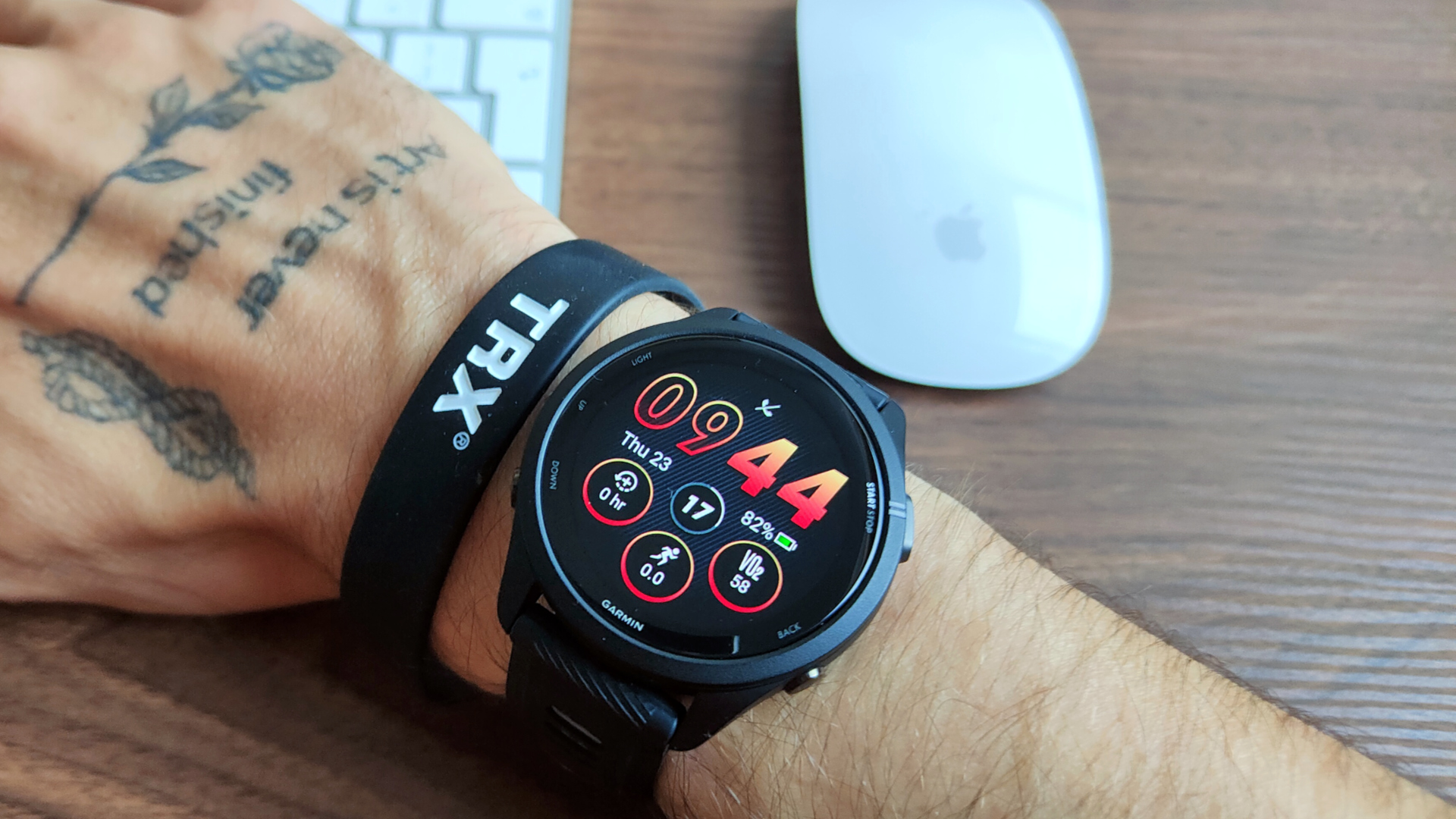
Garmin's latest mid-range running watch offers long battery life, dozens of helpful training and recovery features, exciting colour options, and a pretty AMOLED touchscreen display. It probably isn't worth the upgrade for those who bought the Forerunner 255 Music recently, but the watch has plenty of new features and better sensors to justify the price for owners of older Garmin watches.
-
+
Crisp, easy-to-read AMOLED display (finally!)
-
+
Available in two case sizes
-
+
Funky colour options
-
+
Same reliable sensor accuracy
-
+
Plenty of health and wellness features
-
+
Increased internal storage space
-
+
Decent battery life
-
-
You'll have to pay top dollar for the pretty screen
-
-
Interestingly, no ECG functionality aboard
-
-
Music storage isn't optional anymore
Why you can trust T3

Garmin Forerunner 265 review TL;DR: finally, an AMOLED Forerunner! It's not perfect, but the Forerunner 265 shows a lot of promise and retains the best qualities of its predecessors.
I've been harping on about AMOLED Garmin watches since I reviewed the Garmin Venu 2. I love that smartwatch because it proved that Garmin watches could have AMOLED displays without sacrificing battery life. Then, Garmin released the otherwise brilliant non-AMOLED Garmin Forerunner 255 and Garmin Forerunner 955 wearables, which made me wonder how long I would have to wait to lay my hands on a Forerunner with a modern display.
I didn't have to wait too long, did I? Less than a year after those two were launched, Garmin released the AMOLED Forerunner 255 – the subject of this review – and the Forerunner 965 and kindly sent me a sample of the former to try. After putting the watch through its paces for the last couple of weeks, I'm now ready to share my findings. Will we feature the Garmin Forerunner 265 in our best running watch or best triathlon watch guides? Maybe both? Let's find out!
Garmin Forerunner 265 review: Price and availability
The Garmin Forerunner 265 was announced in March 2023 and is available to buy now at Garmin UK, Garmin US and Garmin AU for a recommended retail price of £430/$450/AU$770. The watch comes in two case sizes (42 mm and 46 mm) and three distinct colour varieties per case size, which is refreshing to see from Garmin. Needless to say, I had probably the most boring colourway in for the review (Black Bezel and Case with Black/Powder Gray Silicone Band).
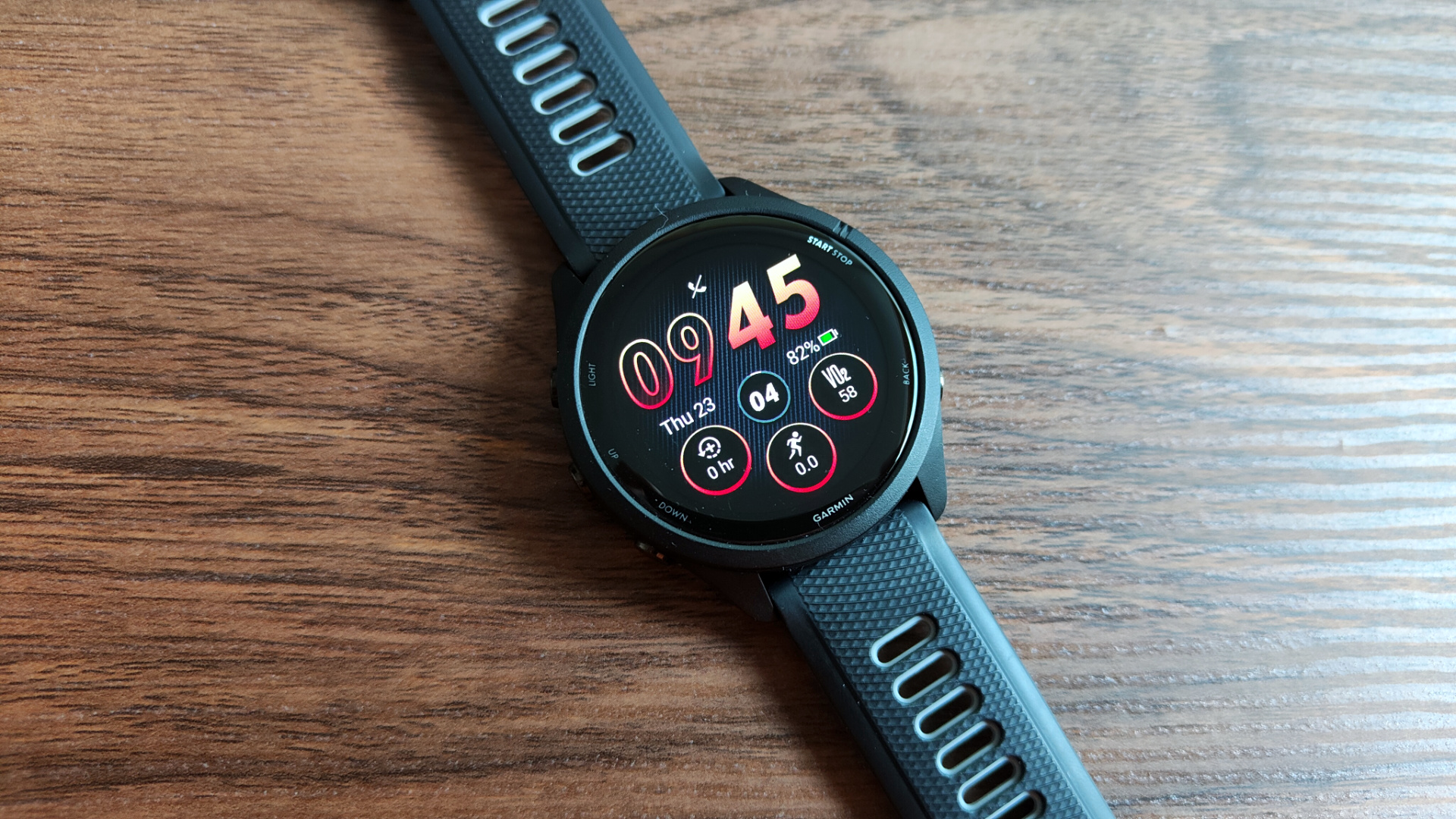
Garmin Forerunner 265 review: What's new?
The main difference between the Forerunner 265 and its predecessor is, of course, the AMOLED touchscreen display, a first in Forerunners. As I mentioned above, a few Garmin watches already had AMOLED displays, so if you've seen a Venu or maybe a Garmin Epix Gen 2 before, you know what you're getting with the Forerunner 265.
Another difference is the case size: the smaller Forerunner 265 has a 42 mm case, while the adorable Forerunner 255S is only 41 mm. Also different is the onboard music storage space – the Forerunner 255 only had 4GB, but the new Forerunner 265 has 8 GB (both versions). However, there isn't a non-music version of the Forerunner 265.
The new version is lighter (46g vs 49g) and has a new charger cable. Well, the business end of the cable is still the usual 4-prong Garmin variety, but the other end is now USB-C instead of USB 2.0. The battery life is also poorer on the Forerunner 265, which is understandable (more on this below).
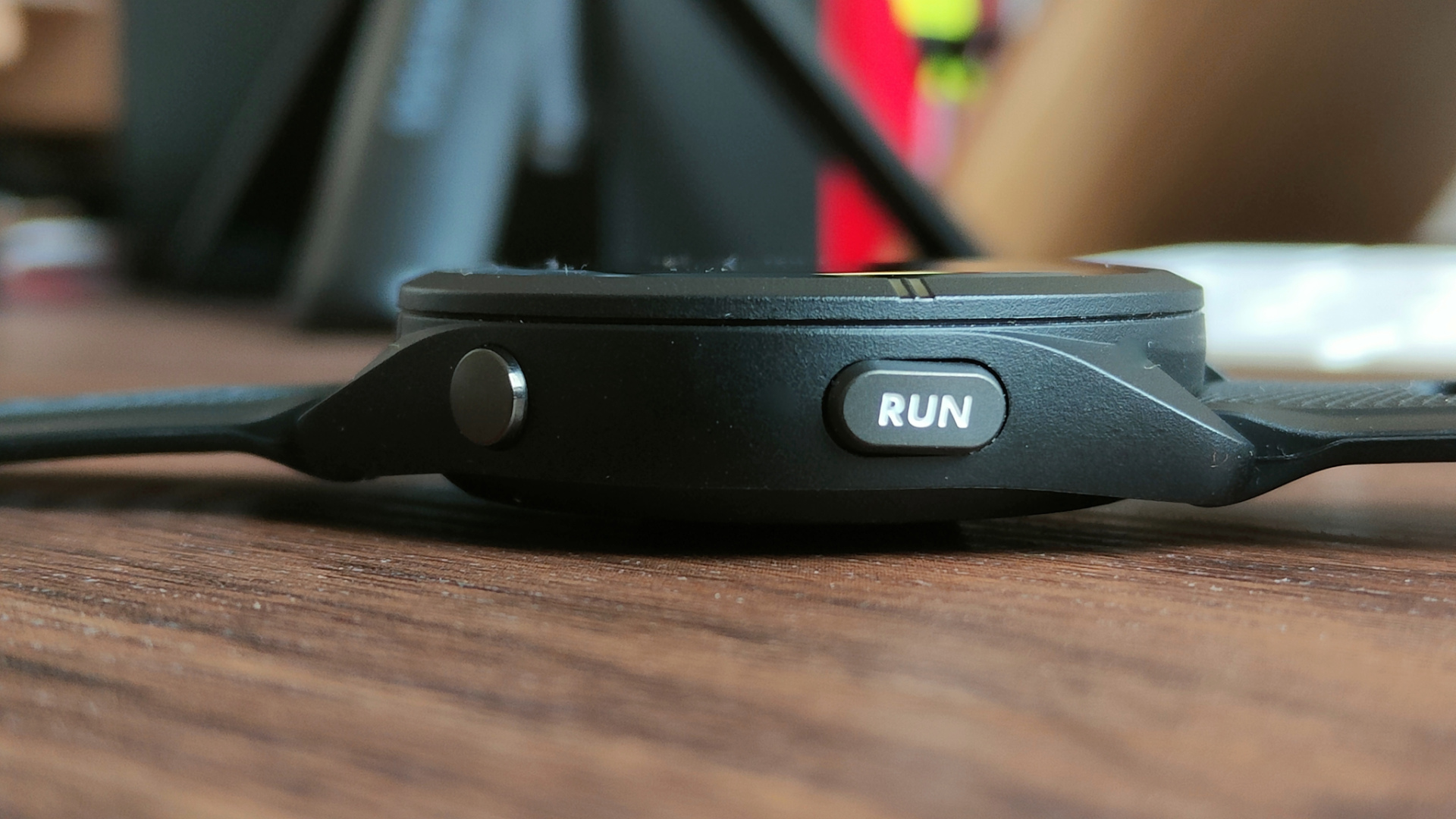
Garmin Forerunner 265 review: Physical design
I'm glad to see Garmin is starting to take branding seriously. Apart from the new colourways, the Forerunner 265 features a few little details that are nice to look at and help distinguish the watch from the sea of other Garmin wearables. The word 'RUN' can be found on the strap and one of the physical buttons – in case anyone needs a reminder of what the watch is for.
The Garmin Forerunner 265 has a 5 ATM water rating. The smaller Forerunner 265S weighs 40 grams, while the large Forerunner 265 is 46 grams (the predecessor weighed 39g and 49g, respectively). The straps are still 22 mm, industry standard quick-release silicone bands.
The button layout is the usual Garmin 5-button setup, and the case is still made of light-yet-durable fibre-reinforced polymer. The AMOLED display (1.1" with 360 x 360 pixels resolution and 1.3" with 416 x 416 pixels resolution) is protected by a Corning Gorilla Glass 3 lens. The AMOLED screen is not only beautiful to look at but makes it easier to read the watch in broad daylight.
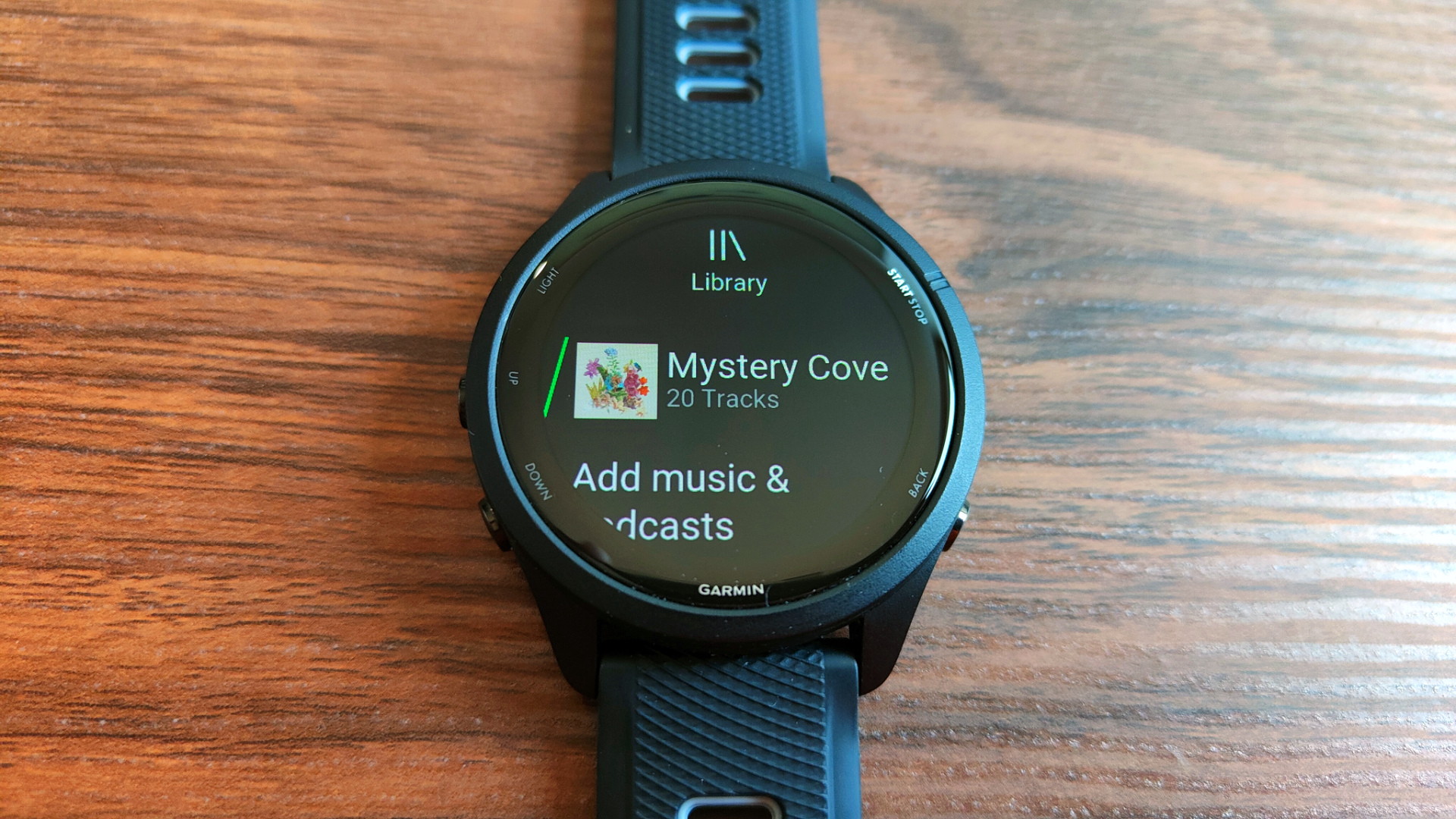
Garmin Forerunner 265 review: Battery life
It comes as no surprise that battery life has decreased compared to the Forerunner 255 due to the addition of the energy-intense AMOLED display. That said, the battery life on the Forerunner 265 isn't too bad, especially compared to certain AMOLED smartwatches (check T3's best Apple Watch guide for more info). The two Forerunner 265 models have different battery lives, with the smaller one outperforming the large variety on this front. After all, that has a smaller display.
Both versions come with storage for office music, but listening to music will negatively impact battery life. To put it in perspective, the Garmin Forerunner 265 Large has a claimed battery life of 13 days in smartwatch mode, up to 20 hours of GPS-Only GNSS mode and only seven hours in GPS-Only GNSS mode with music. There are other GPS modes (All-Systems GNSS mode + Multi-Band, SatIQ (AutoSelect) GNSS mode, etc.), which further impact battery life.
In real life usage, you won't need to charge the Garmin Forerunner 265 more than once a week considering light running training. I wore the watch 24/7 and tracked sleep and training, and only had to charge the watch once during the two-week testing period. Not bad for an AMOLED watch!
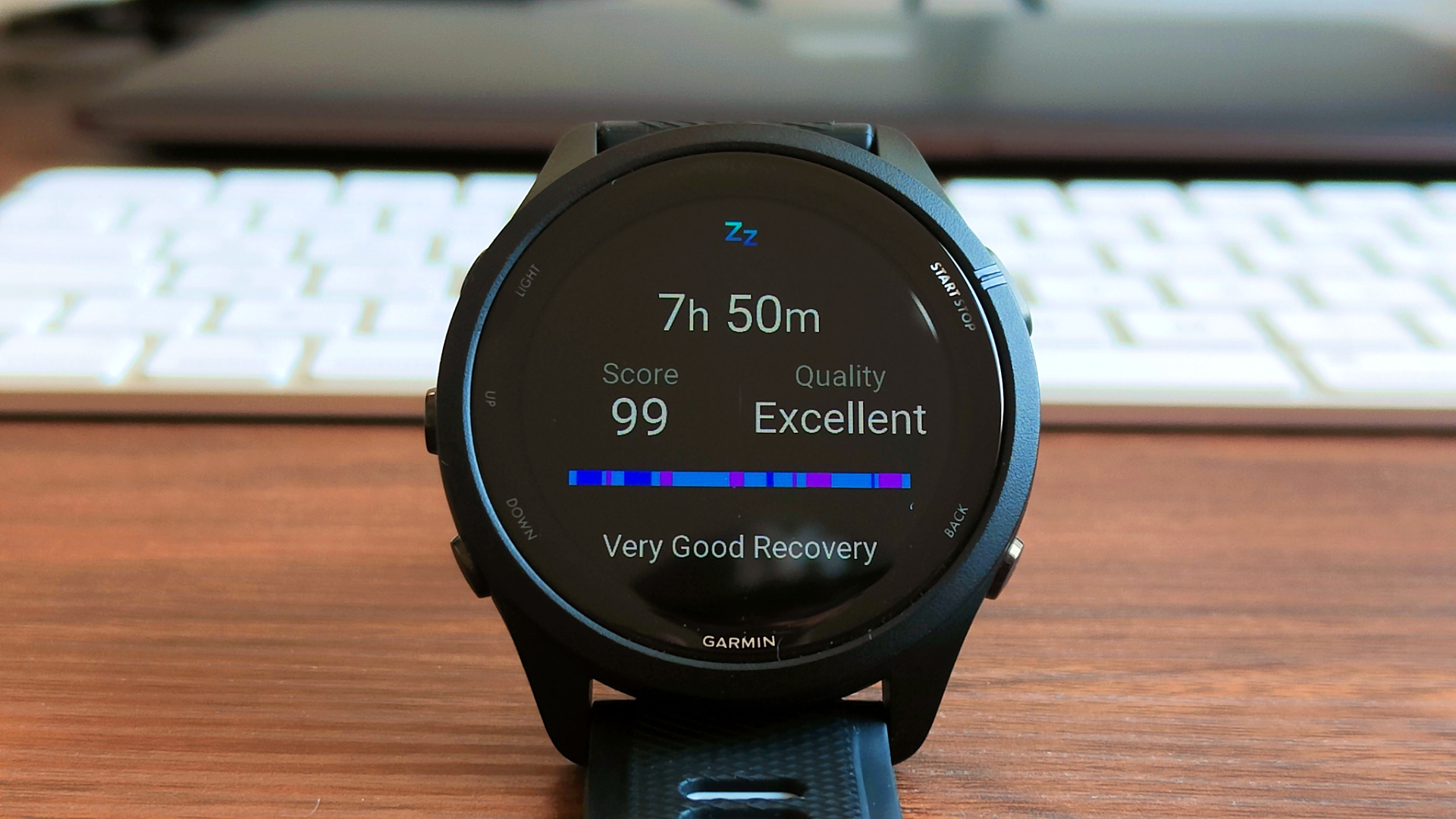
Garmin Forerunner 265 review: Features
The Garmin Forerunner 265 inherited all its predecessor's training features, including heart rate variability tracking, training readiness, race widget, workout suggestions, heart rate tracking, training status etc. It also has the Morning Report feature, which I adore. The watch is Garmin Coach-enabled and automatically tracks certain activities (e.g. walking, running, cycling) and minutes spent exercising (a.k.a. Intensity Minutes).
You also get stress and sleep tracking, music storage (mentioned multiple times already), smart notifications, weather updates, blood oxygen measurements, and more. The only feature you miss out on is ECG, but I guess Garmin had to exclude this to make their watches somewhat different from each other. There are more than enough smart and training features on board for running.
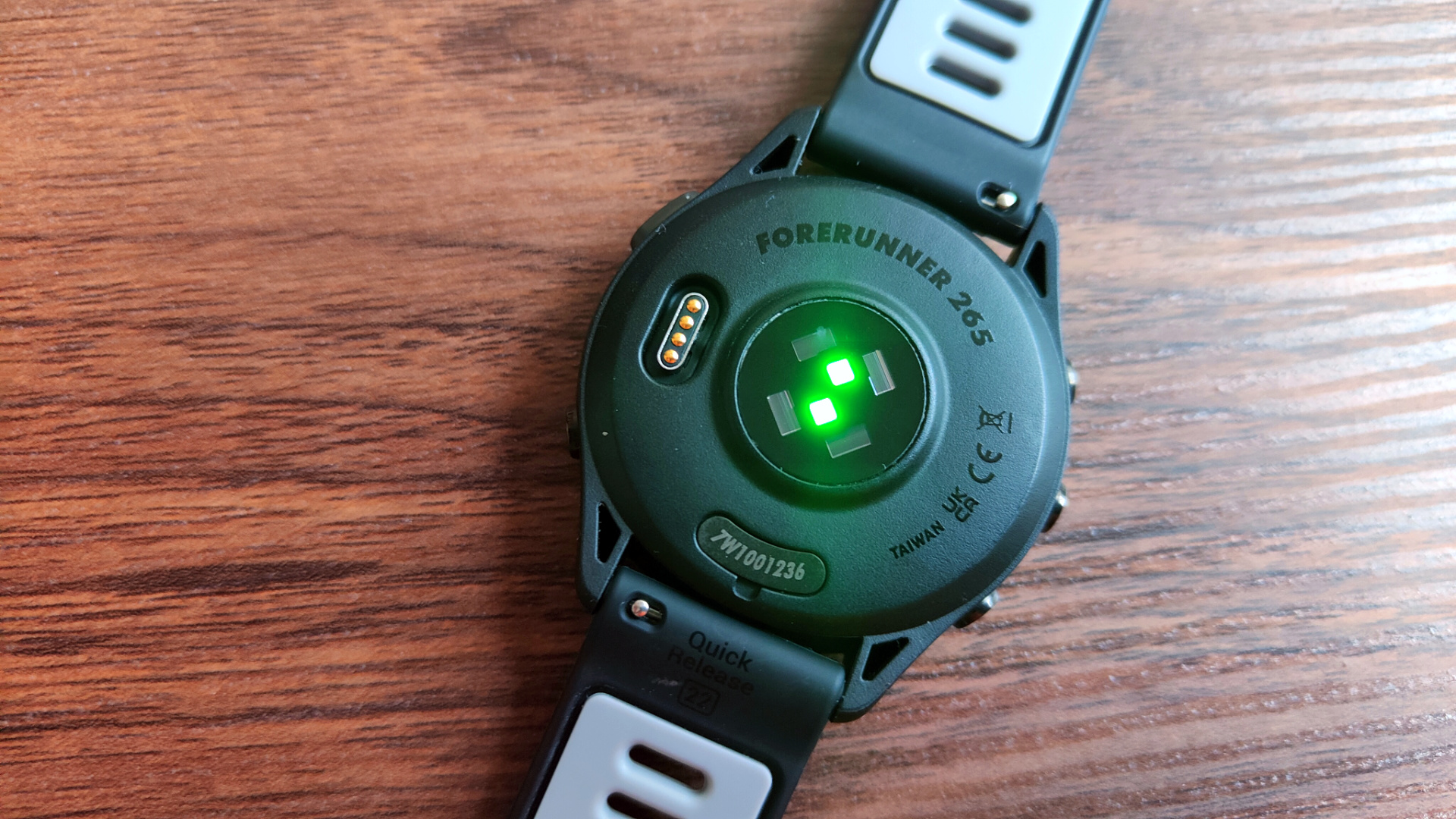
Garmin Forerunner 265 review: Accuracy
I won't spend much time discussing the watch's accuracy for two reasons. One, the Forerunner 265 features the latest GPS chip and heart rate sensor Garmin offers, so the wearable is as accurate as possible right now. Two, I recently ran a 100-mile ultra and had been resting more than usual, so I haven't done loads of training with the watch.
The Garmin Forerunner 265 picks up GPS signal quickly and makes the most of SatIQ, which selects the best GPS mode based on signal availability. SatIQ is fantastic as it lets you use the best GPS mode without necessarily draining the battery. Heart rate accuracy also seems on point, and as always, as long as there are no spikes in heart rate (e.g. HIIT training), the watch should provide enough accuracy for training and recovery.
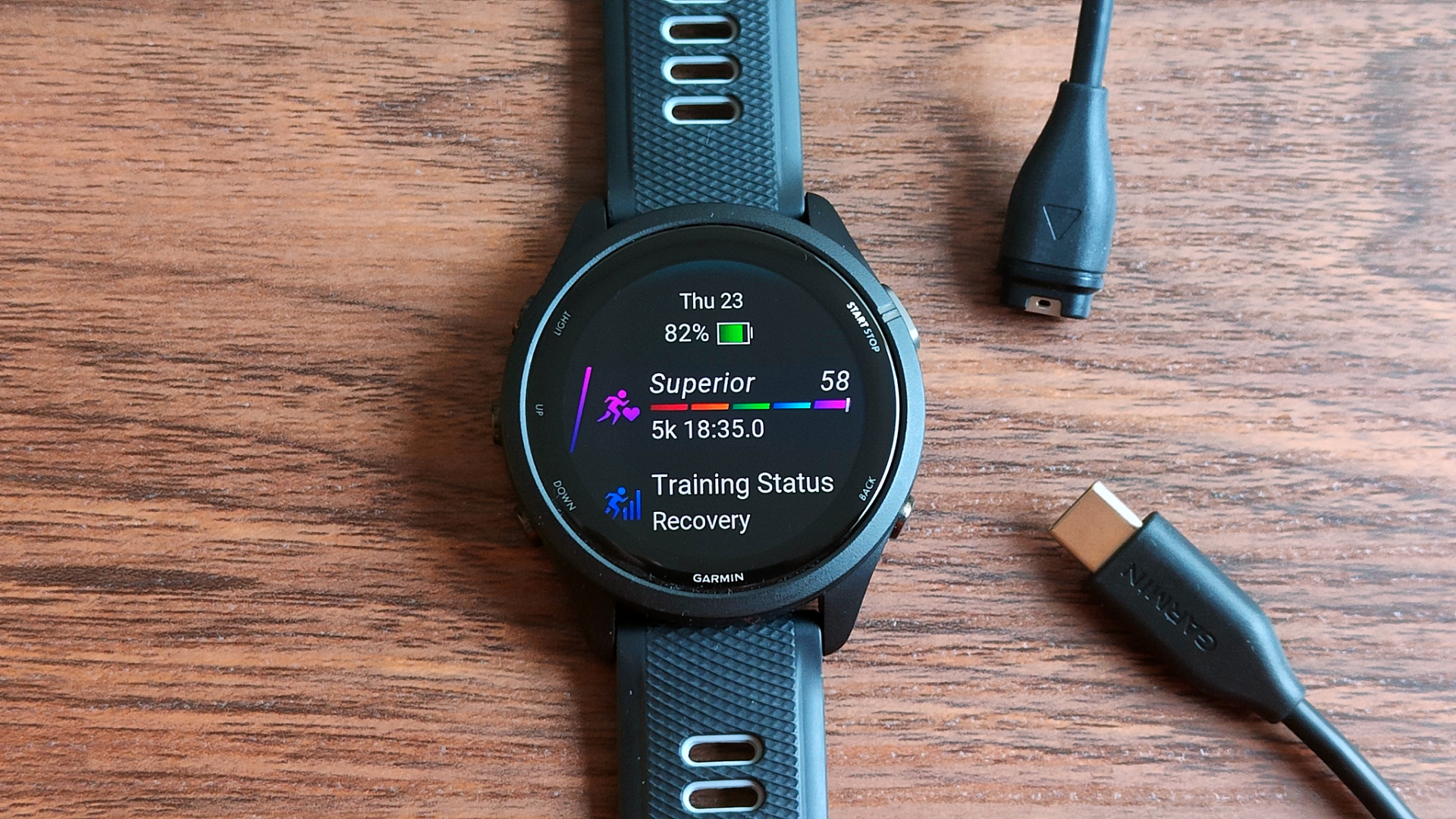
Garmin Forerunner 265 review: Verdict
I've waited long enough for an AMOLED running watch from Garmin, and now that the Forerunner 265 is here, I can't be happier. This mid-range performance wearable offers long battery life, dozens of helpful training and recovery features, exciting colour options, and a pretty AMOLED touchscreen display.
Some reviewers complained about the price, and yes, it's expensive. It's unfair to compare the watch with the non-music Forerunner 255, though, as that obviously doesn't offer a like-for-like comparison. And the Forerunner 255 Music is only somewhat cheaper than the Forerunner 265 (although both are comparatively expensive).
I probably wouldn't upgrade from the previous iteration if I bought it recently, but if you have an older Garmin, maybe the Garmin Forerunner 245, the new wearable has plenty of new features and better sensors to justify the price. You also get all the training and recovery features, better GPS, a more accurate heart rate sensor and offline music storage. Yes, please.
(First reviewed March 2023)
Garmin Forerunner 265 review: Also consider
Polar's Pacer Pro has a similar approach to the Forerunner 265 in terms of being marketed as a running watch when it's actually a multisport wearable. It has shorter battery life, a clumsier user interface and a less impressive display, but the training and recovery features are on point, and the wearable is much cheaper, too. Read my full Polar Pacer Pro review for more details.
Another alternative is the Forerunner 945. It might be a few years old, but it has a light yet resilient polymer case, tough Corning Gorilla Glass DX lens, a multitude of sensors, and offers a range of hardcore and casual features as well as a long battery life for cheap. Not bad. Read my full Garmin Forerunner 945 review.
Sign up to the T3 newsletter for smarter living straight to your inbox
Get all the latest news, reviews, deals and buying guides on gorgeous tech, home and active products from the T3 experts

Matt Kollat is a journalist and content creator who works for T3.com and its magazine counterpart as an Active Editor. His areas of expertise include wearables, drones, fitness equipment, nutrition and outdoor gear. He joined T3 in 2019. His byline appears in several publications, including Techradar and Fit&Well, and more. Matt also collaborated with other content creators (e.g. Garage Gym Reviews) and judged many awards, such as the European Specialist Sports Nutrition Alliance's ESSNawards. When he isn't working out, running or cycling, you'll find him roaming the countryside and trying out new podcasting and content creation equipment.
-
 Smeg adds a touch of navy sophistication to its iconic breakfast set
Smeg adds a touch of navy sophistication to its iconic breakfast setIt's a minimalist's dream
By Lizzie Wilmot Published
-
 My most anticipated Netflix movie of the year gets a wild new trailer
My most anticipated Netflix movie of the year gets a wild new trailerHavoc looks pretty unbelievable
By Max Freeman-Mills Published
-
 Forget the tariffs, Paddington 3 is now on Netflix to bring you joy
Forget the tariffs, Paddington 3 is now on Netflix to bring you joyPaddington In Peru is now streaming on Netflix
By Mike Lowe Published